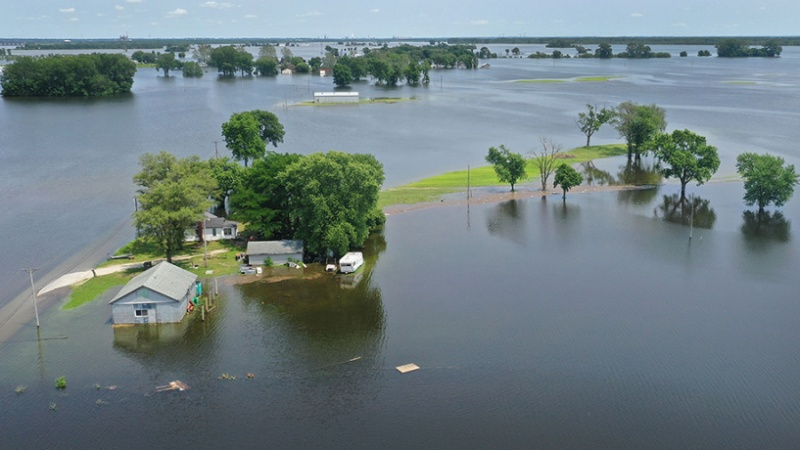Oct 5 2020
Relationships play a crucial role in climate change. This was the core point emphasized in a new study by the University of Oregon that explores the interaction between atmospheric carbon dioxide, plants, and rising water levels in the Mississippi River.

Image Credit: University of Oregon.
The research paper, which was published recently in the Geological Society of America’s journal GSA Today, compared historical atmospheric carbon data with the analysis of herbarium leaf samples to understand the relationship between rising carbon levels and progressively disastrous floods in the American Midwest.
The researchers used data spanning over two centuries and showed that as carbon levels in the air increase because of fossil fuel combustion, the ability of plants to take in water from the air reduces. That means excess rainfall finds its way into streams and rivers, contributing to their potential for damaging floods.
The study, co-authored by the University of Oregon’s Museum of Natural and Cultural History geologist Greg Retallack and earth sciences graduate student Gisele Conde, concentrated on Ginkgo biloba leaf samples representing a time frame of more than 260 years.
The researchers inspected the leaves’ stomata, minute pores that deciduous plants use to capture carbon dioxide from the air. In low-carbon settings, plants boost the density of stomata so they can capture adequate carbon dioxide for photosynthesis, but they need comparatively few stomata in carbon-rich surroundings.
Variations in stomatal density, which we observed using microscopic imaging, reflect corresponding changes in atmospheric carbon over the 264-year span.
Greg Retallack, Geologist, Professor of Earth Sciences and Director of Condon Fossil Collection, Museum of Natural and Cultural History, University of Oregon
Stomatal density also rules the level of transpiration, the process by which plants take in water and release water vapor. The number of stomata is directly proportional to the transpiration potential. In the leaf samples under analysis, the team noticed an overall reduction in stomatal density and transpiration potential across the 260-year timespan, with a 29 percent decrease from 1829 to 2015.
The researchers observe that the decrease has directly added to the catastrophic floods that highly torment the Midwest. This is because less transpiration results in more water running off into rivers and streams, and in turn, greater flooding hazard.
The devastation of individual floods is still related to that year’s weather, but the steady rise of carbon levels is driving the average level of the Mississippi River up by a stunning 2 centimeters per year.
Greg Retallack, Geologist, Professor of Earth Sciences and Director of Condon Fossil Collection, Museum of Natural and Cultural History, University of Oregon
The researchers also emphasize the need for updating planning efforts and insurance concepts in the area.
Rising carbon levels aren’t always considered in flood prediction and risk analyses. We hope the study will help clarify the danger that climate change and attendant flooding pose to agricultural communities around the Mississippi River, and help inform new insurance and zoning policies there.
Greg Retallack, Geologist, Professor of Earth Sciences and Director of Condon Fossil Collection, Museum of Natural and Cultural History, University of Oregon
Journal Reference
Retallack, G J & Conde, G D (2020) Flooding Induced by Rising Atmospheric Carbon Dioxide. GSA Today. doi.org/10.1130/GSATG427A.1.